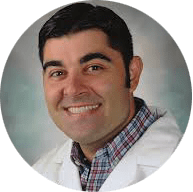 Handshaking has been practiced as far back as the 5th century BC and used today as a common way of greeting others. In the hospital setting this occurs multiple times throughout the day. Many alternatives to the handshake have been developed and utilized, but they have failed to replace the handshake as a form of greeting. Nosocomial infections have been identified as a major preventable complication of inpatient care and one of the most important initiatives to reduce this is hand hygiene. The authors of this study propose the fist bump as a safe and effective way to avoid hand-to-hand contact and therefore reduce transmission of infection. 1
Handshaking has been practiced as far back as the 5th century BC and used today as a common way of greeting others. In the hospital setting this occurs multiple times throughout the day. Many alternatives to the handshake have been developed and utilized, but they have failed to replace the handshake as a form of greeting. Nosocomial infections have been identified as a major preventable complication of inpatient care and one of the most important initiatives to reduce this is hand hygiene. The authors of this study propose the fist bump as a safe and effective way to avoid hand-to-hand contact and therefore reduce transmission of infection. 1
What they did
- Five male and five female subjects were randomly selected and had measurements of:
- Palm surface area
- Contact time
- Rate of bacterial transmission (colony forming units)
- The following were the steps carried out:
- Wash hands for 1 minute with soap and water.
- Each subject did the same tasks (i.e. open doors, push elevator buttons) and shake the hand of 20 other healthcare workers.
- Wash hands for 1 minute with soap and water
- Right hand was pressed palm down onto agar plate for 5 seconds
- The same tasks were performed with using a fist bump technique instead of a handshake and fist surface was pressed down onto agar plate for 5 secs
- Agar plates were incubated for 72 hours at 37 degrees Celsius
Results
| Measure | Handshake | Fist Bump |
| Palm surface area (in2) | 30.206 | 7.867 |
| Contact Time (sec) | 0.75 | 0.28 |
| Colonization of agar plate (CFU) | 187.5 | 42.5 |
Limitations
- Pilot study with small sample size, limiting statistical significance
- Which infections were actually transmitted were not recorded due to limited funding
- Viral and fungal transmissions were not assessed in this study
Conclusion
Due to decreased surface area and time of contact, the fist bump may further help reduce transmission of nosocomial infections in healthcare settings.
Author information
The post Trick of the Trade: Fist Bump to Reduce Pathogen Transmission appeared first on ALiEM.


